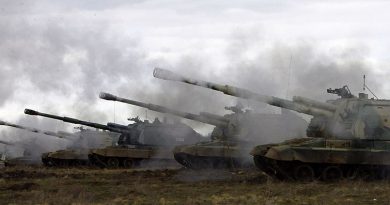Alaska can expect even more job losses in 2017 than last year

After worse-than-anticipated job losses in 2016, Alaska is now expecting even more in the year ahead.
Alaska is forecast to lose about 7,500 jobs — a drop of 2.3 percent — in 2017, the Alaska Department of Labor and Workforce Development said in an economic report released Thursday. That prediction reflects “decline in nearly every major industry.”
The state’s multibillion-dollar budget deficit and sensitivity to oil prices remain Alaska’s two biggest economic hurdles, the report said. But losses that hit oil and gas, construction, and professional and business services hardest last year will now continue to spread to other sectors in what the report called a more “broad-based decline.”
“This year will be characterized by widespread reductions in the service industries that depend on consumer spending, which will be dampened by lost wages and lower confidence,” the report said.
Alaska saw a 2 percent job loss in 2016, according to preliminary employment numbers from the state. That’s more than the 0.7 percent the labor department predicted a year ago. Overall, Alaska lost about 6,800 jobs in 2016, the state’s first net jobs loss since 2009.
Losses directly related to oil “are expected to slow,” the report said. The oil and gas sector lost 2,800 jobs in 2016 (a 20 percent decline) as oil prices tumbled from more than $100 per barrel in 2014 to below $40 per barrel. This year, the industry is expected to lose 1,400 jobs.
“(Losses are) going to continue to spread into secondary, indirect support sectors — the parts of the economy driven by local demand,” said Caroline Schultz, an economist with the department. She authored the statewide report.
Retail is expected to lose 1,000 jobs across the state, and construction is forecast to lose 1,200. State and local government employment combined are expected to shed 1,600 jobs, which would be a decline of 2 percent compared to last year.
Leisure and hospitality, which includes arts, entertainment, restaurants and more, will also likely take a hit.
“Although a strong summer tourism season will offset some loss, it can’t make up for the year-round decline in local consumption,” the report said. “Restaurants and bars are expected to take the brunt of these losses in 2017, but less in-state travel year-round will also pinch hotels.”
While there’s no official definition for a recession at the state level, Schultz said it’s safe to assume Alaska is in one now.
“Decisions the Alaska Legislature makes this year probably won’t be able to pull the economy out of the red in 2017,” the report said, “but not resolving the fiscal gap could prolong the contraction as Alaska’s credit rating suffers, (businesses) are shy to invest, and consumer confidence is undermined.”
The health-care sector continues to be the main bright spot, and a small one, predicted to add 500 jobs this year for growth of 1.4 percent, according to the forecast. Even that growth is slowed from 2016, when the sector added 900 jobs.
Anchorage is expected to lose 2,800 jobs (compared to 3,600 last year), Fairbanks is expected to lose roughly the same amount of jobs last year at 750, and Southeast is expected to lose 600 jobs, a bit more than preliminary numbers show the region lost last year.
Other losses are expected to hit the North Slope area, Schultz said. The labor department doesn’t do an individual forecast for every area in the state.
Related stories from around the North:
Canada: The innovation imperative in Arctic policy, Blog by Heather Exner-Pirot
Finland: Chinese investors move ahead in Finnish Lapland, will build €1 billion biofuel refinery, The Independent Barents Observer
Norway: Trans-Arctic fiber cable can make Kirkenes to high-tech hub, The Independent Barents Observer
Russia: Arctic oil – Russia pushes North as U.S. blocks Alaska leasing, Blog by Mia Bennett
Sweden: Swedes discover new Barents oil and gas, The Independent Barents Observer
United States: Caelus Energy CEO calls offshore Arctic oil discovery a ‘game-changer’, Alaska Dispatch News



